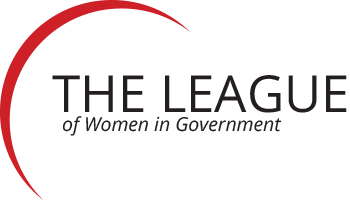Gender Bias & Gender Equity
The diversity of an organization, divisions and teams is important to culture and performance. The demographics of an organization and work group have shown in many scholarly and academic studies to influence individual behavior, culture, employee health, and organizational performance. This is why the education of public officials about the value and importance of gender bias and gender equity is a key part of the League’s mission.
GENDER BIAS
So what is gender bias? Simply put, gender bias is a preference or prejudice toward one gender over the other. Bias can be conscious or unconscious. Bias may manifest in many ways, both subtle and obvious and may result in small or large consequences.
UNCONSCIOUS BIAS
The truth is every day we make decisions that are unconsciously biased. This means that we don’t realize the moment we make the decision that we may be biased. The decision can be a reflection of multiple reasons or situations which may or may not be your fault. By definition, unconscious bias is the term used to define the concept that individuals have preferences for objects and people at a subconscious level that unintentionally influence their behavior and decision making.
According to the Harvard Business Review, “Most of us believe that we are ethical and unbiased. We imagine we’re good decision makers, able to objectively size up a job candidate or a venture deal and reach a fair and rational conclusion that’s in our, and our organization’s, best interests. But more than two decades of research confirms that, in reality, most of us fall woefully short of our inflated self-perception.”
The Miller Center for Social Entrepreneurship shares that unconscious bias is natural. As humans, we tend to make decisions based on the given knowledge about a subject. That knowledge comes from the people we meet, the books we read, the places we visit, the events we attend and many other situations and scenarios. All these events create a set of information in our brain for the purpose to create certain opinions and make decisions. Most of the times, our brain creates shortcuts and uses past knowledge to make assumptions. This is when you start forming opinions which are biased towards one race, one ethnicity, one cast or one “gender.”
While this applies to both genders in our society, bias towards women and their ability to perform a certain job is particularly distressing given the time period women have held professional management and senior executive positions in the modern workplace. Many of the stated advocates of gender equality may not even realize the unconscious gender bias they have towards women because it is not a topic that is regularly discussed or debunked in the workplace. If it were, more progress could certainly be made to eliminate bias because when we become aware of our biases and watch out for them, they are less likely to blindly dictate our decisions.
Our unconscious belief system leads us to think in a certain way, that after some time, seems correct to each of us personally. Unconscious gender bias makes people ignore the ability of one person and start hindering it with the preconceived notions that each person has become accustomed to through their own experiences. Some of these superficial biases that the League is working hard to dispel in appointed and elected officials include:
- Women can’t be chief executives because of their personal commitments.
- Women let their employees and employers suffer because of their emotions.
- Women’s emotions dictate their decision-making ability.
- Women are bad with numbers, hence they can’t manage a large capital project or have oversight over a budget.
- Women leaders avoid the technical aspect of their organization, division or assignment.
- Women will leave their professional careers when they get married or have a child.
All of the above statements are biases that are untrue, but remain deeply embedded into the fabric of leadership and corporate culture.
CHALLENGING UNCONSCIOUS BIAS
Getting rid of the unconscious bias is not easy. After realizing that you or someone in your organization may be making unconsciously biased decisions, the next step is to challenge it and start questioning it. In the same way as questioning others, you can question your own unconscious assumptions and biases as well.
Whenever you notice yourself making an assumption without the evidence to support it, remember to ask yourself the following questions:
- Is this true?
- Is it always true?
- What evidence do I have?
If the answer is no to any of these questions, reconsider your thought and trace this assumption or association to challenge it for future.
